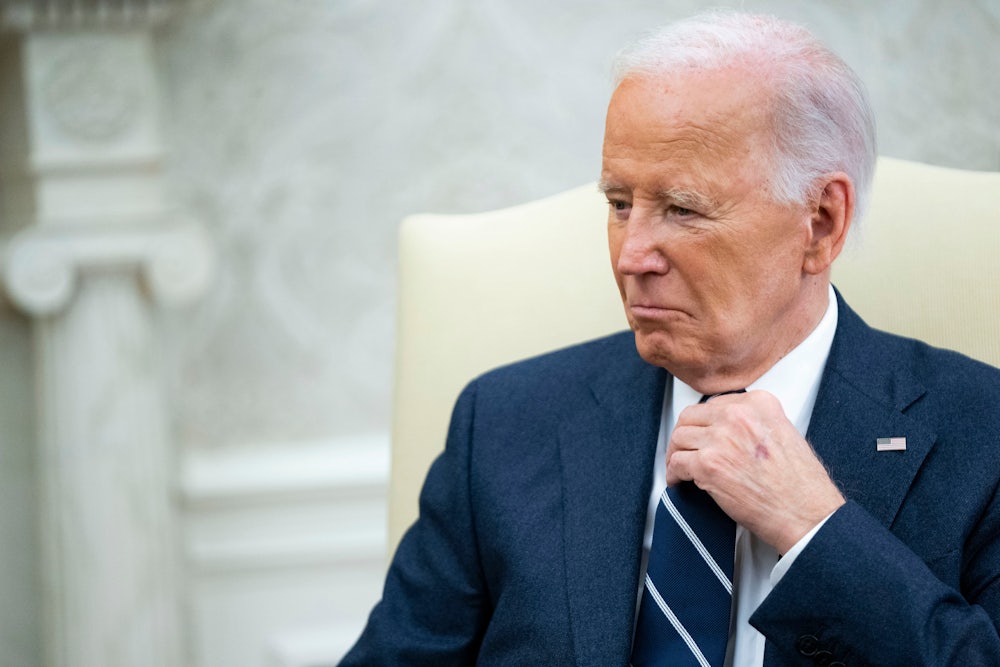The pitch of Bidenomics was that it could solve several problems at once. Laws like the Bipartisan Infrastructure Law, the Inflation Reduction Act, and the CHIPS and Science Act would help rebuild America’s industrial heartland by reinvesting in American manufacturing, a sector whose workers are 78 percent white and 70 percent male. Reindustrialization could win back voters (working class white men, in particular) who had grown disillusioned with Democrats and drifted toward Trump. Perhaps most importantly, investing in key twenty-first century growth industries—i.e., chips and clean energy—would allow the U.S. to “win the future” against China, breaking its dominance in those increasingly important markets. The way to do that would be to offer massive subsidies to companies to invest in those technologies stateside, and then to insulate those companies from foreign (i.e. Chinese) competition using tariffs and other protectionist measures. Reducing emissions has been a mostly a tertiary goal of Bidenomics, although the administration has frequently touted the Inflation Reduction Act’s modest $37 billion-a-year in spending on wind, solar and a host of other green technologies as “the largest ever climate investment.” That this is true, at least domestically, seems like cause for despair rather than celebration: much, much more is needed.
Bidenomics has succeeded on some of its own narrowly defined terms of success: in the two years since the Inflation Reduction Act passed, investment in manufacturing clean energy and transportation technology totaled $89 billion—more than quadruple amount invested in the two years before it passed. As a tool for winning back disaffected voters, it may have been worse than nothing.
The Biden administration’s economic narrative was full of contradictions from the start. Strangely, the executives who shipped manufacturing jobs abroad in the 1990s weren’t the villains of Bidenomics but the protagonists, who the CHIPS and Inflation Reduction Acts were intended to support in creating jobs and an overall spirit of American dynamism. Accordingly, two-thirds of the Inflation Reduction Act’s $369 billion in energy-related funds are expected to go to corporations.
Harris made no attempt to break with this approach or offer something new. While spending very little time talking about substantive policy issues overall, she promised to continue the current administration’s strategy. In her last few days on the campaign trail, Harris emphasized her commitment to American manufacturing. At a semiconductor manufacturing facility in Saginaw County, Michigan, she touted the $325 million that plant received from the CHIPS and Science Act. “We created tax credits to create the incentive for private sector to do this work,” she said, chiding Trump for having “sold advanced chips to China.” This all makes a certain amount of sense politically. The states with the highest percentages of manufacturing employment are mostly swing states. North Carolina, Michigan and Georgia all received at least $5 billion in new manufacturing investments over the last year, fueled by the Biden-Harris administration’s trademark economic policies.
This week, despite a “manufacturing boom,” low unemployment and a handful of other sunny macroeconomic data points, Bidenomics looks like a resounding political failure. Per exit polls, two-thirds of voters nationwide rate the economy as either “poor” or “not so good.” The overwhelming majority of those voters (69 percent) cast their ballots for Donald Trump. That data is largely mirrored in states that have received big injections of cash thanks to the Inflation Reduction Act and CHIPS and Science Act. In Michigan, 63 percent of voters were dissatisfied with the economy; 72 percent of those voters voted for Trump.
Keeping in mind that the manufacturing workforce is overwhelmingly white and male, exit polling finds that 60 percent of white men in Michigan voted for Trump this year. Sixty-six percent of white men in North Carolina voted for him, too, along with 74 percent of white men in Georgia. These figures are all fairly consistent with exit polling from 2020. Exit polls also don’t reflect the many working class people who don’t reliably vote, or who voted in 2020 and didn’t this year.
This isn’t all Bidenomics’ fault, of course. But the fact that the most heavily publicized portions of the White House’s economic agenda seems to have fallen so flat politically—including in the places it’s helped the most—should prompt some soul searching about what actually ails the economy. Biden has said in recent months that his administration “invested in American manufacturing to restore the backbone of our Nation: the middle class.” Yet most of the middle class—and the working class, for that matter—doesn’t work in manufacturing. Home prices, meanwhile, have risen 45 percent over the last four years, and nearly half of U.S. renters spend more than 30 percent of their income on housing. Home insurance and mortgage rates are persistently high, and still-elevated interest rates have made car ownership—a necessity in most of the country—more expensive, too. Healthcare, childcare and college educations are wildly expensive, and can saddle people with six-figure debts for decades.
Trump promises to Make America Great Again. Biden promised to make America make things again, a slightly but not fundamentally different pledge. Harris mainly promised to not be Donald Trump. In an election defined in large part by economic frustrations, the Democratic Party’s pitches on that front (or lack thereof) left a lot to be desired. Offering massive tariffs and tax breaks to industrialists, ultimately, may have been an even worse answer to the cost of living crisis than it was to the climate crisis. It certainly isn’t helping Democrats win elections, either.








